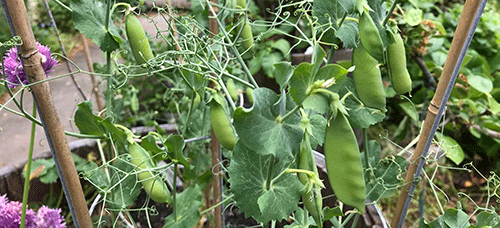
Pets | Resources
Handbag Materials
Question from Wendy
Lisa,
Can you tell me if it’s toxic to carry handbags made of these materials? I know I may need to find out more details about the chemicals but this is what I have so far.
Handbag 1:
Dyed Nylon with Water and Stain Resistant Coating
Dyed Italian Leather
Nylon Strap
Handbag 1:
70% Polyamide
30% Polyurethane
Vachetta Leather Trim
Wendy
Lisa’s Answer
Let’s take a look at each of the components of these handbags:
Handbag #1:
Nylon with water and stain resistant coating – Untreated Nylon is one of the least toxic plastics. It is still a synthetic fiber that is made from petroleum but there is little concern for its toxicity. It’s the treatment that is more concerning. It’s hard to say without more information but most stain resistant treatments are made with perfluorochemicals (PFCs) which can be highly toxic.
Dyed leather handle– the tanning process for leather can use 250 different chemicals including chromium which can be very toxic.
Nylon strap– If the Nylon is untreated it should be fine.
Handbag #2:
Polyamide– This is Nylon. If it is untreated it should be fine.
Polyurethane– There are different types of polyurethane. Read Debra’s post about polyurethane toxicity here. It is likely that this is a food-grade film which would have low toxicity, but you would need to confirm that.
Vachetta leather trim– This is vegetable dyed leather. Vegetable tanning does not use chromium which is a positive but since there can be 250 different chemicals used in the tanning process you might want to find out more about the specific chemicals used. Some vegetable tanned leather may use all-natural materials, but you would need to check to be sure.
Based on the information you have provided, it looks like Handbag #2 is the safer options, but more information would be helpful.
Removing Odors from Insulation
Question from Colleen
Hi Lisa,
Has anyone successfully moved into a house where the previous tenants used scented detergents and dryer sheets in the house. I was under the assumption that the fragrances got into the insulation in the walls, etc. How long did it take to outgass if ever? Would a “bake out” even take care of it?
Lisa’s Answer
Debra interviewed Daliya Robson from Nirvana Safe Haven and they discussed a number of ways to eliminate odors (click here for transcript).
I would first try some low-cost options like zeolite or charcoal to try to absorb the odors. As a next step I would try the “bake out”, which has proven successful for many situations. If neither of those work, you might try some of the products mentioned in the interview. Finally, a good air purifier can be very effective. While it is an investment, you will have it for many years to help reduce toxins in your home. There are many sealers on the market that are great for reducing formaldehyde, but I have read that they do not always reduce odors, particularly if they are organic.
Has anyone else had success minimizing these types of odors?
Feit
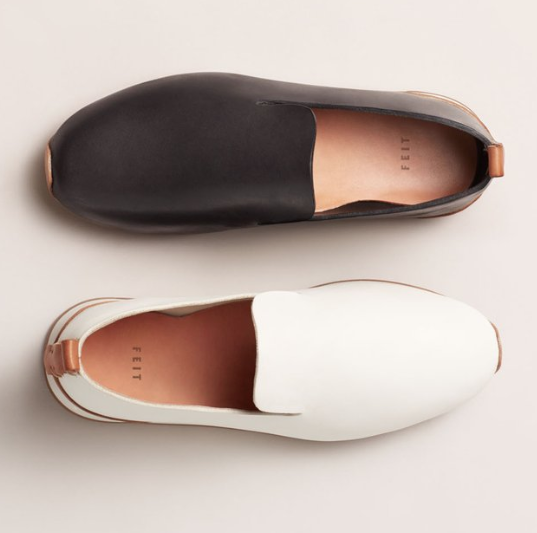 Shoes for women and men made with exceptional craftsmanship and materials. “In 2004 FEIT [fight] was born as a response—an evolution of consumerism and production that moves away from volume and excess, and towards quality and sustainability. FEIT footwear is built for longevity, from natural materials via human construction. All FEIT footwear is hand sewn and hand lasted by a master shoe maker. Few makers are skilled enough to produce footwear in this manner, hence only limited numbers can be produced…FEIT adheres to a strict policy of using biological materials and natural treatments whenever possible. Natural materials breathe, patina and become one with the wearer. Materials page.
Shoes for women and men made with exceptional craftsmanship and materials. “In 2004 FEIT [fight] was born as a response—an evolution of consumerism and production that moves away from volume and excess, and towards quality and sustainability. FEIT footwear is built for longevity, from natural materials via human construction. All FEIT footwear is hand sewn and hand lasted by a master shoe maker. Few makers are skilled enough to produce footwear in this manner, hence only limited numbers can be produced…FEIT adheres to a strict policy of using biological materials and natural treatments whenever possible. Natural materials breathe, patina and become one with the wearer. Materials page.
Undandy
 These shoes for men are a cut above ordinary shoes. Their about page starts with this quote “A man who works with his hands is a laborer; a man who works with his hands and his brain is a craftsman; but a man who works with his hands and his brain and his heart is an artist.” Made from vegetable tanned leather, there are many styles and colors to choose from…you can customize any pair and even design your own! About the leather.
These shoes for men are a cut above ordinary shoes. Their about page starts with this quote “A man who works with his hands is a laborer; a man who works with his hands and his brain is a craftsman; but a man who works with his hands and his brain and his heart is an artist.” Made from vegetable tanned leather, there are many styles and colors to choose from…you can customize any pair and even design your own! About the leather.
District Leathers
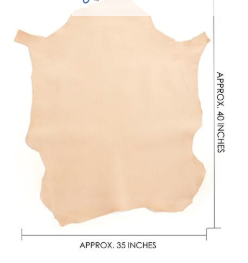 Vegetable-tanned hides for creating your own leather projects. In addition to the vegetable tans link here, also see the “cow hides” and lamb hides” menus and choose “vegetable tans.” See their very informative Leather Buying Guide . Free swatches. “Vegetable tanned leathers are tanned using strictly organic materials such as tree bark. They possess warm deep colors. As veg-tan leather ages, it absorbs the light, oils, and air that it is exposed to which cause their colors to become more rich.”
Vegetable-tanned hides for creating your own leather projects. In addition to the vegetable tans link here, also see the “cow hides” and lamb hides” menus and choose “vegetable tans.” See their very informative Leather Buying Guide . Free swatches. “Vegetable tanned leathers are tanned using strictly organic materials such as tree bark. They possess warm deep colors. As veg-tan leather ages, it absorbs the light, oils, and air that it is exposed to which cause their colors to become more rich.”
Marlondo Leather
 complete range of leather goods—including purses, backpacks, travel gear, and accessories—handmade individually by artisans using vegetable-tanned leather. Classic styles, reasonable prices. About their leather.
complete range of leather goods—including purses, backpacks, travel gear, and accessories—handmade individually by artisans using vegetable-tanned leather. Classic styles, reasonable prices. About their leather.
Etsy Vendors of Vegetable-Tanned Leather Purses
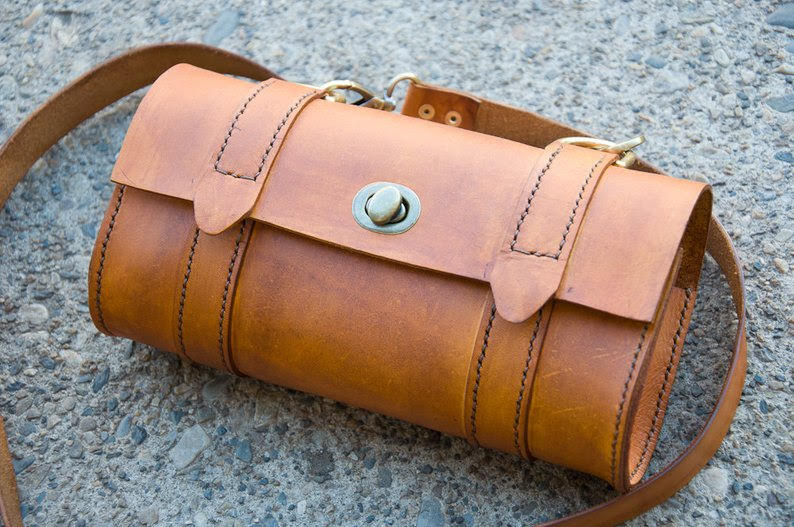 I had to include this because there are so many small artisans now working with vegetable-tanned leather that it was a joy for me to see their creations. You’ll find unusual designs here as well as traditional classics. Note the country items are shipped from as they are not all use. But here’s where you’ll find vegetable-tanned leather purses and accessories at prices well below other sources. Note: This is a search results page on Etsy for “vegetable-tanned leather purses.” Try reaching on “vegetable0tanned leather for other items.
I had to include this because there are so many small artisans now working with vegetable-tanned leather that it was a joy for me to see their creations. You’ll find unusual designs here as well as traditional classics. Note the country items are shipped from as they are not all use. But here’s where you’ll find vegetable-tanned leather purses and accessories at prices well below other sources. Note: This is a search results page on Etsy for “vegetable-tanned leather purses.” Try reaching on “vegetable0tanned leather for other items.
Frank Clegg
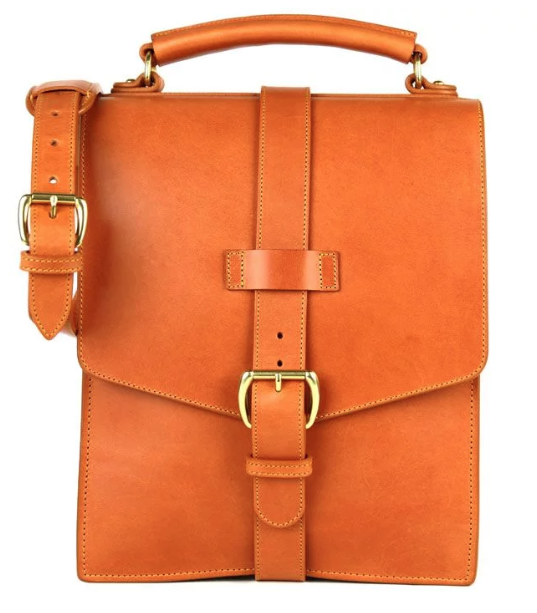 Fine leather goods handcrafted in the USA. These are very high quality and very expensive. About the leather.
Fine leather goods handcrafted in the USA. These are very high quality and very expensive. About the leather.
Eating “Plant-to-Mouth” From My Organic Garden
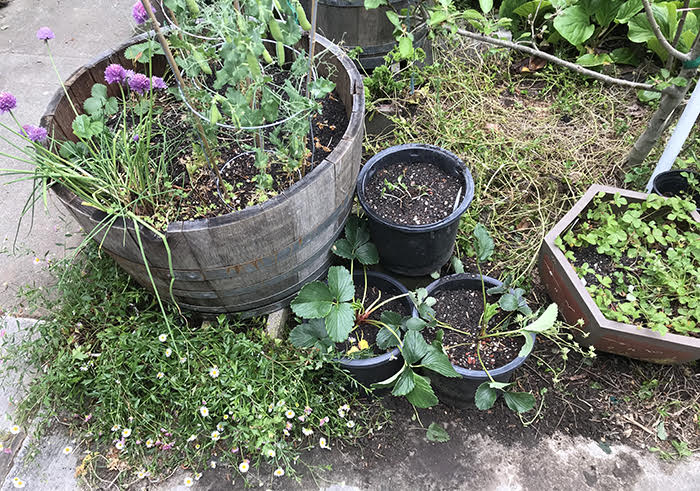
I started out last year with this tiny garden outside my office door. I took this photo yesterday morning after cleaning out the weeds. All these plants are from last year. Those purple flowers to the left are chive blossoms, several varieties of strawberries, Santa Barbara daisies (not edible but pretty). There’s another barrel with last year’s potatoes popping up again and a pomegranate tree, plus more over by the motorhome we are turning into a tiny house.
I spend a lot of time writing about how we can choose consumer products that are made without toxic chemicals, but “toxic-free” also includes doing and making thing yourself without toxics. Such as organic gardening.
This year we had a lot of rain, so my little garden is popping with plants I planted last year.
I’ve got chive blossoms ready to eat right now. English peas I planted earlier this year are about to give a harvest. Strawberry plants are sending out runners and the new plants are about twice the size of the original plants and already producing flowers. The two raspberry canes planted last year have produced so many new plants we have been digging them up and replanting because they are overflowing the barrel.
Ralph Waldo Emerson once said, “The Earth laughs flowers.” Today I am saying, “Here in my garden, the Earth is laughing vegetables and fruits!”
I’m fortunate to have Larry and his mom and a brother and a sister—all experienced gardeners—and enough fertile soil that we can each garden to our hearts content. This morning there was a large basket of java beans just harvested that I think we’re having for dinner.
Next weekend we’re going to some wonderful plant nurseries where we can buy heirloom seedings for edible plants. I can’t wait!
As I was walking around my garden, looking forward to pulling raspberries and tomatoes right off the plants and into my mouth I suddenly thought, “Oh, the next step after farm-to-table is plant-to-mouth!” I can hardly wait to do that in a few days when the peas pop. Fresh English peas with chive blossoms right out of my hand.
Is Silicone Inherently Antibacterial?
Question from Jennifer
Hi Debra,
Does anyone know if silicone touted as antibacterial and antimicrobial is that way because it is naturally a deterrent or if it is treated with a chemical? And if treated with a chemical to be antibacterial, is it inert in silicone in the final product?
I can’t find any information online about it at all for non medical products. For example I’m looking at buying a silicone dish drying mat because the cloth ones just get moldy fast and they all seem to say they are antimicrobial, but I can’t determine why, if it is a natural byproduct of being silicone or if treated like so many things are now.
If my dishes that eat off of will be touching I was wondering if I should be concerned. Thanks!
Debra’s Answer
Antibacterials is a big subject and antibacterials can range in toxic effect from silver having virtually no health effects to triclosan, which is known to be an endocrine disruptor and cause skin and breast cancer, among other health effects. There is even now an antimicrobial made from peppermint oil, so whenever you see the word “antimicrobial,” you need to find out the specific antimicrobial that has been used.
Antibacterials may be widely used and not on the label, for they can be used to prevent the deterioration of plastics, for example, which would not be on the label because it’s not a selling point for consumers. Again, the antimicrobial may be perfectly harmless or have health effects.
With regards to your question as to whether silicone is inherently antibacterial or whether a chemical is added, I would say from looking at online search results that silicone is NOT inherently antibacterial because additives exist to make silicone antibacterial for specific uses.
Would the antibacterial leach from the silicone? Well, depending on what form the antibacterial comes in, it would likely bind to the silicone and not be released. But again, we don’t know the antibacterial or the form it is in, or its toxicity.
I’m using my best logic here, based on my understanding, not on tests.
I always apply the Precautionary Principle, which is, when in doubt, don’t use it.
This is another example of why there needs to be improved labeling that reveals what all the materials are.

